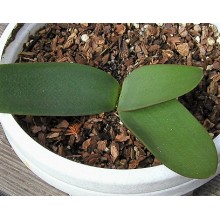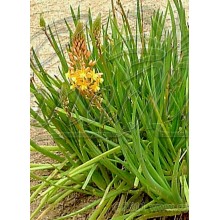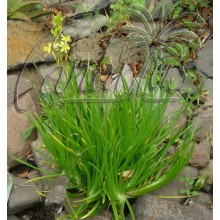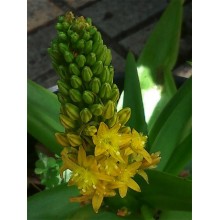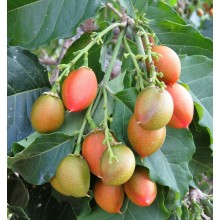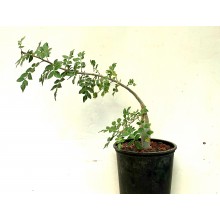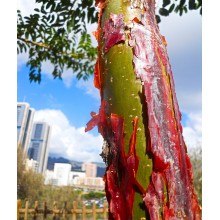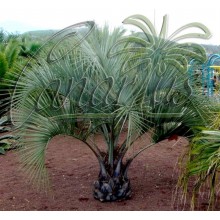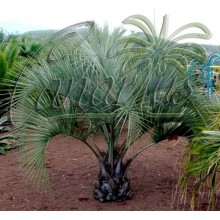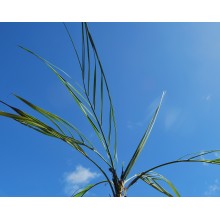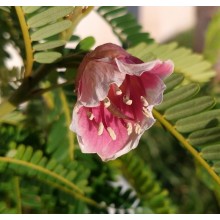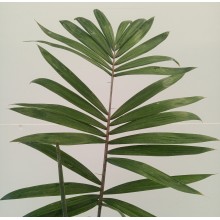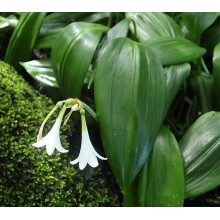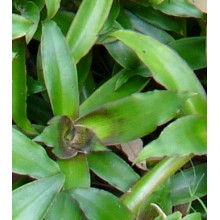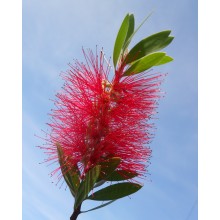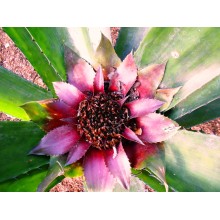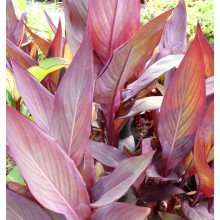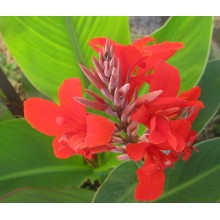Tutte le piante Ci sono 1883 prodotti.

Se vi piacciono le piante esotiche, allora sei nel posto giusto. Canarius offre le piante esotiche difficile da trovare che sono raramente disponibili in centri di giardinaggio. Il nostro negozio ha specie naturali e rari ibridi. Offriamo piante esotiche provenienti dalle Isole Canarie.
Gli ordini sono inviati a ovunque in Europa e anche in tutto il mondo. I pacchi raggiungeranno la vostra casa in pochi giorni dopo la spedizione (ma abbiamo bisogno anche alcuni giorni per l'elaborazione). Non esitate a contattarci se avete domande.
Sotto-categorie
-
Succulente
I deserti del mondo e le zone secche ospitano le piante più interessanti. Canarius offre una selezione crescente di piante succulente di massima qualità, perché sono coltivate all'aperto, in pieno sole delle Isole Canarie.
I succulente o "piante grasse" sono specie di ritenzione di acqua, adattate alle condizioni di asciutto. Loro accumulano succum (succo, acqua) nelle loro foglie, steli o radici, e spesso mostrano un aspetto robusto e carnoso.
-
Esotiche
Le piante esotiche sono specie provenienti da altre parti del mondo, e di solito hanno le qualità ornamentali: una vegetazione lussureggiante, fiori colorati, forme insolite... Qui è possibile trovare una grande varietà di piante esotiche: da bromeliacee e Heliconias, fino a palme e piante d'appartamento.
Le piante esotiche non hanno un uso particolare. I collettori acquistano questo tipo di piante per la loro rarità, per la decorazione interna o esterna, a seconda delle loro caratteristiche.
-
Da frutto & Per la salute
Le piante da frutto, erbe e piante medicinale sono concentrati su come ottenere una salute migliore. In questo contenuto della sezione, ogni tipo di pianta produce effetti salutari, entrambi alberi da frutto (Feijoa, Ananas, Fina Jete...) e piante per la salute, come Graviola, Aloe vera, Callisia fragrans... Nel normale metabolismo di tutti gli esseri viventi, l'organismo produce delle sostanze nutritive da latenti per l'ambiente; alcune di queste sostanze chimiche sono parte del processo in tutte le specie. Normalmente, i composti utili sono concentrati in alcune dei sue parti: foglie, semi, fiori...
-
Speciale
Su canarius.com cerchiamo di rimuovere i limiti nel campo della botanica. Sul nostro negozio online cerchiamo di facilitare l'acquisto / vendita di piante di tutto il mondo. Per questo motivo, coltiviamo piante di tutto il mondo, specie più comuni ed anche piante più particolari, come si può vedere in questa sezione.
-
Brunsvigia marginata
Brunsvigia marginata
Oh my , oh my ! A Brunsvigia with cherry red flowers is a must!
49,50 € -
Bulbine frutescens Orange Form
Bulbine frutescens Orange Form
15-25 cm clump. - Clumping, freely-flowering, South African succulent. This is the orange flowered form.
10,70 € -
Bulbine frutescens Yellow Form
Bulbine frutescens Yellow Form
15-20 cm clump. Succulent clumping perennial, relative of the genus Aloe, native to the Cape region of South Africa. Bears nice spikes in Spring and Summer. This is the yellow flowered form.
10,70 € -
Bulbine natalensis
Bulbine natalensis
Succulent evergreen plant that looks like a toothless aloe, it has fragrant yellow flowers. Hardy to about -3 C.
10,70 € -
Bunchosia argentea
Bunchosia argentea
Shrub to small tree loved for its small and sweet red fruits. They have a creamy, sticky, buttery texture, with a fruity aroma. People compare to dry figs with peanut butter, or peanut butter with jelly or jam, often mentioning a berry flavour.
58,00 € -
Bursera fagaroides
Bursera fagaroides
This fragrant "copal" is a shrub to small tree, native to different dry areas of Mexico. It becomes a perfect bonsai subject if we keep it in pots and it builds a crown with a fascinating shape.
38,60 € -
Bursera fagaroides - LARGE
Bursera fagaroides - LARGE
This fragrant "copal" is a shrub to small tree, native to different dry areas of Mexico. It becomes a perfect bonsai subject if we keep it in pots and it builds a crown with a fascinating shape.
114,20 € -
Butia odorata - Jelly Palm
Butia odorata - Jelly Palm
Feather palm with sweet, tasty, scented fruits. It is native to Brazil, Uruguay and Argentina and it is the only frost-hardy species of palm that can produce abundant, delicious and useful fruits in colder climates. Leaves are blue-silvery, elegantly arching. Mature specimens show no damage at -10 C and some have survived to -20 C !
43,50 € -
Butia odorata - Jelly Palm - Large
Butia odorata - Jelly Palm - Large
Feather palm with sweet, tasty, scented fruits. It is native to Brazil, Uruguay and Argentina and it is the only frost-hardy species of palm that can produce abundant, delicious and useful fruits in colder climates. Leaves are blue-silvery, elegantly arching. Mature specimens show no damage at -10 C and some have survived to -20 C !
159,00 € -
Butia X 'archeri x paraguayensis'
Butia X 'archeri x paraguayensis'
This is a cross between two uncommon dwarf palms from eastern central Brazil. It is said to be a natural hybrid because two populations overlap in the same area. Both parents are cold-hardy palms, suitable to plant in milder parts of Europe.
162,00 € -
Cadia purpurea
Cadia purpurea
Cadia is an ornamental shrub from Eastern Africa and Arabia, at 500-2100 m asl. It has graceful arching branches with pinnate leaves and bell-shaped pink to purple flowers.
48,30 € -
Calamus henryanus
Calamus henryanus
Climbing palms, or rattans, are incredible living beings which are the most massive of all climbing plants and often a dominant element of rainforests.
43,20 € -
Caliphruria subedentata
Caliphruria subedentata
Evergreen bulb with ornamental foliage and flowers. With its white blooms, it looks like a miniature Eucharis, and actually the genus Caliphruria is related to Eucharis
13,80 € -
Callisia fragrans
Callisia fragrans
Pack of 2 rosettes of 10-20 cm - Ornamental creeping plant with funnel-shaped rosettes producing tall spikes of cream-white flowers. It is a semi-succulent, said to have medicinal properties. It can be grown in baskets, simple pots or as a ground cover.
10,60 € -
Callistemon citrinus
Callistemon citrinus
Callistemon citrinus, commonly called scarlet bottlebrush, lemon bottlebrush or red bottlebrush, is a large evergreen tropical shrub native to Australia.
54,00 € -
Canistrum giganteum 'Leopardinum'
Canistrum giganteum 'Leopardinum'
Imrpressive tough bromeliad in the genus Wittrockia. This form has a special attractive dark mottling on the leaves. The inflorescence comes out as a very large flower-like structure or red-maroon colours. Not a hybrid, this is probably a local form of Wittrockia gigantea, formerly known as Canistrum giganteum. It is easy to grow, but quite slow.
28,00 € 33,00 € -
Canna indica 'Intrigue'
Canna indica 'Intrigue'
Purple leaved canna, commonly cultivated in Northern Tenerife. Thick purple leaves are held erect and have some bluish tones.
18,70 € -
Canna sp. Red
Canna sp. Red
Mid-sized canna with very simple red flowers with orange-marbled throats. It is robust and ever-blooming. This is possibly a wild form or an old cultivated strain brought from Venezuela many years ago.
19,40 €
Al momento ci sono pochi prodotti in questa categoria Tutte le piante




















